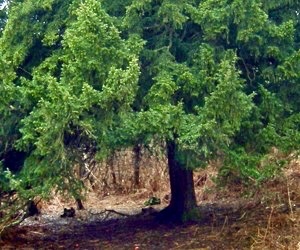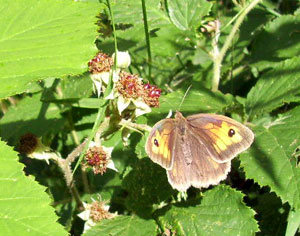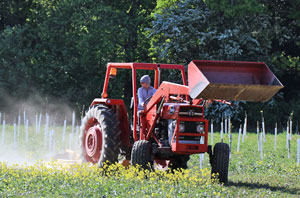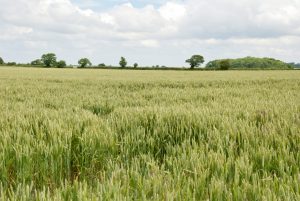Woodland web updates : 19

Shade and stress.
Shade (low light intensity) causes plants to elongate, reach up to the light to ‘outgrow’ the competition. Such ‘elongated plants’ are said to exhibit etiolation. However, there is a point when this strategy is counterproductive. The plant simply cannot outgrow its taller neighbours, it is wasting resources and becoming weaker. So plants in deep shade do not generally use this strategy. Deep shade is detected by the phytochrome pigment system and ‘relayed' onto the plant’s circadian clock, the internal ‘daily time piece’. This internal clock has various components and particular genes, some of which have an additional role in suppressing stem elongation (that would normally occur when shaded).
Welsh woodlands and insect pollinators.
 A recent study across many different sites in Wales has revealed the habitats favoured by pollinators such as bees, overflies and butterflies. The research found twice as many insects in broad leaved woodlands as compared to grassland areas. They also found that farmlands without hedgerows had significantly fewer insects. Both hedgerows and woodlands include trees such as oak and maple, which offer varied niches for pollinators. They provide food (leaves) for larval stages, pollen and nectar for adults, plus egg laying sites and shelter.
A recent study across many different sites in Wales has revealed the habitats favoured by pollinators such as bees, overflies and butterflies. The research found twice as many insects in broad leaved woodlands as compared to grassland areas. They also found that farmlands without hedgerows had significantly fewer insects. Both hedgerows and woodlands include trees such as oak and maple, which offer varied niches for pollinators. They provide food (leaves) for larval stages, pollen and nectar for adults, plus egg laying sites and shelter.
In Wales, there are plentiful grassland areas (mainly due to farming) with woodland only contributing 15% of land cover. However, the Welsh Government aims to plant 180,000 hectares of new woodland by 2050. New woodland will not only contribute to tackling climate change (through carbon sequestration) but will also do much to promote insect biodiversity.
Sludge as fertiliser
 Sewage sludge is commonly spread across farmland as a form of fertiliser (throughout Europe). Sewage sludge is the residual, semi-solid material that is the ‘by-product’ of sewage treatment of industrial and / or domestic wastewater. Sometimes, referred to as biosolids. It is a sustainable / renewable source of nutrients and reduces material going to landfill or incineration.
Sewage sludge is commonly spread across farmland as a form of fertiliser (throughout Europe). Sewage sludge is the residual, semi-solid material that is the ‘by-product’ of sewage treatment of industrial and / or domestic wastewater. Sometimes, referred to as biosolids. It is a sustainable / renewable source of nutrients and reduces material going to landfill or incineration.
The use of sludge has attracted attention as it can contain:
- Breakdown products of various medical / pharmaceutical that have been excreted / eliminated from us and / or animals, such as hormones, antibiotics, various drugs
- Heavy metals such as lead, cadmium, arsenic
- Industrial chemicals / breakdown products PCB’s, dioxin
 Now, research at Cardiff University has shown that micro plastics in sludge are a problem; these are plastic particles less than 5 mm in size. It estimates that between 31,000 and 42,000 tonnes of micro-plastics are applied to European soils each year. They are a threat to wildlife as they are easily ingested and can carry / contain toxic chemicals and may pass along the food chain. The UK was shown to potentially have the highest level of microplastics in its soils, followed by Spain, Portugal and Germany.
Now, research at Cardiff University has shown that micro plastics in sludge are a problem; these are plastic particles less than 5 mm in size. It estimates that between 31,000 and 42,000 tonnes of micro-plastics are applied to European soils each year. They are a threat to wildlife as they are easily ingested and can carry / contain toxic chemicals and may pass along the food chain. The UK was shown to potentially have the highest level of microplastics in its soils, followed by Spain, Portugal and Germany.
Comments are closed for this post.
Discussion
I think that the use of sewage sludge as a fertilizer on farmland is disgusting and should be banned. Why not use good old farmyard manure?

I’ve no problem with sewage sludge (human waste) being used on farms if it was ‘clean‘ but this is obviously not the case. I do wonder though if using farmland waste, good old manure, still carries the drugs, hormones, and antibiotics. Even microplastics, as these seem now to be part of our food web.
Animals eat, and they eat what we allow them. This food can also be laced with the same toxins that we ingest. We really have ‘mucked’ things up. :(
Mark
26 November, 2022